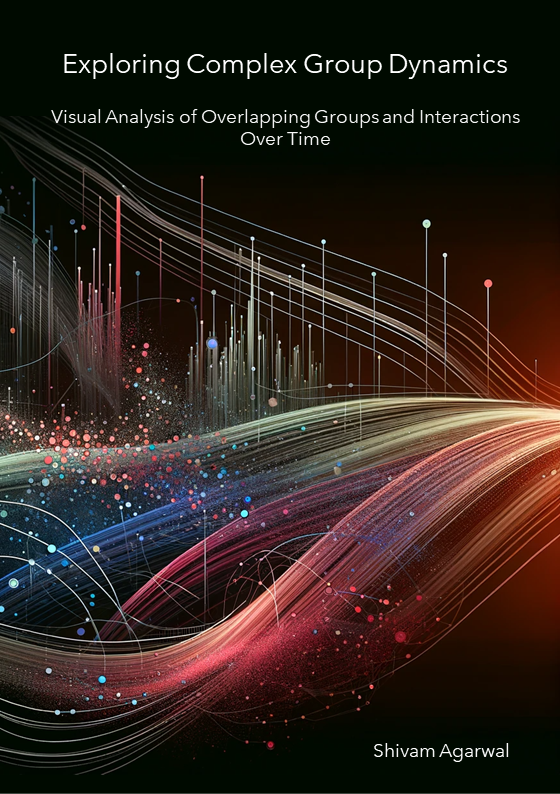Exploring Complex Group Dynamics: Visual Analysis of Overlapping Groups and Interactions Over Time
PhD Dissertation, 2023

Abstract:
Analyzing group dynamics is crucial to understand the behaviors of members in groups. The analysis could help answer important questions: How does the relationship between group members change over time? What is the effect of an action of a member on others? How do group members coordinate their efforts to achieve a goal? What are the overall changes in group behaviors over time? This thesis proposes novel techniques for visually exploring group dynamics, thereby aiding in answering such questions. The proposed techniques apply to diverse scenarios, as demonstrated through application examples. This work focuses on the two characteristic features of group dynamics. First, since members can belong to multiple groups simultaneously, it results in overlaps between groups. We propose two novel visualizations to analyze dynamic memberships in overlapping groups. Their effectiveness is demonstrated by insights from application examples, e.g., authors evolving research interests, classification models performance in their training process, and developer contributions in software repositories. Second, the interactions among group members. A design and application space is proposed to explore user behaviors from mixed reality sessions. Three visualizations are presented to investigate collaborative and competitive interactions among members. The studied scenarios include humans interacting in mixed reality and autonomous agents collaborating and competing in simulated environments. We propose an example of an integrated visual representation to show dynamic memberships in overlapping groups and entity interactions. The thesis discusses the future possibilities in encoding enriched interactions and describes a few works in progress. Finally, the thesis summarizes the contributions, highlights the limitations of the proposed visualizations, and presents a brief outlook toward the future.
PDF DOI Slides
To cite: Shivam Agarwal, "Exploring Complex Group Dynamics: Visual Analysis of Overlapping Groups and Interactions Over Time" PhD Dissertation, 2023. 10.17185/duepublico/81425
BibTeX:
@PhdThesis{Agarwal2023Dissertation,
author = {Agarwal, Shivam},
type = {PhD Dissertation},
title = {Exploring Complex Group Dynamics: Visual Analysis of Overlapping Groups and Interactions Over Time},
year = {2023},
abstract = {Analyzing group dynamics is crucial to understand the behaviors of members in groups. The analysis could help answer important questions: How does the relationship between group members change over time? What is the effect of an action of a member on others? How do group members coordinate their efforts to achieve a goal? What are the overall changes in group behaviors over time? This thesis proposes novel techniques for visually exploring group dynamics, thereby aiding in answering such questions. The proposed techniques apply to diverse scenarios, as demonstrated through application examples. This work focuses on the two characteristic features of group dynamics. First, since members can belong to multiple groups simultaneously, it results in overlaps between groups. We propose two novel visualizations to analyze dynamic memberships in overlapping groups. Their effectiveness is demonstrated by insights from application examples, e.g., authors evolving research interests, classification models performance in their training process, and developer contributions in software repositories. Second, the interactions among group members. A design and application space is proposed to explore user behaviors from mixed reality sessions. Three visualizations are presented to investigate collaborative and competitive interactions among members. The studied scenarios include humans interacting in mixed reality and autonomous agents collaborating and competing in simulated environments. We propose an example of an integrated visual representation to show dynamic memberships in overlapping groups and entity interactions. The thesis discusses the future possibilities in encoding enriched interactions and describes a few works in progress. Finally, the thesis summarizes the contributions, highlights the limitations of the proposed visualizations, and presents a brief outlook toward the future.},
doi = {10.17185/duepublico/81425},
url = {https://doi.org/10.17185/duepublico/81425}
}
